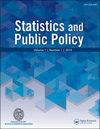Changes in Crime Rates during the COVID-19 Pandemic
IF 1.5
Q2 SOCIAL SCIENCES, MATHEMATICAL METHODS
引用次数: 11
Abstract
Abstract We estimate changes in the rates of five FBI Part 1 crimes during the 2020 spring COVID-19 pandemic lockdown period and the period after the killing of George Floyd through December 2020. We use weekly crime rate data from 28 of the 70 largest cities in the United States from January 2018 to December 2020. Homicide rates were higher throughout 2020, including during early 2020 prior to March lockdowns. Auto thefts increased significantly during the summer and remainder of 2020. In contrast, robbery and larceny significantly declined during all three post-pandemic periods. Point estimates of burglary rates pointed to a decline for all four periods of 2020, but only the pre-pandemic period was statistically significant. We construct a city-level openness index to examine whether the degree of openness just prior to and during the lockdowns was associated with changing crime rates. Larceny and robbery rates both had a positive and significant association with the openness index implying lockdown restrictions reduced offense rates whereas the other three crime types had no detectable association. While opportunity theory is a tempting post hoc explanation of some of these findings, no single crime theory provides a plausible explanation of all the results. Supplementary materials for this article are available online.COVID-19大流行期间犯罪率的变化
我们估计了2020年春季COVID-19大流行封锁期间和乔治·弗洛伊德被杀后至2020年12月期间FBI第一部分的五项犯罪率的变化。我们使用了2018年1月至2020年12月期间美国70个最大城市中28个城市的每周犯罪率数据。整个2020年,包括3月份封锁之前的2020年初,凶杀率都更高。在2020年的夏季和剩余时间里,汽车盗窃案显著增加。相比之下,在大流行后的所有三个时期,抢劫和盗窃都大幅下降。入室盗窃率的点估计表明,2020年所有四个时期的入室盗窃率都在下降,但只有大流行前的时期在统计上具有显著意义。我们构建了一个城市级别的开放指数,以检验封锁之前和期间的开放程度是否与犯罪率变化有关。盗窃和抢劫率都与开放指数呈正相关,这意味着封锁限制降低了犯罪率,而其他三种犯罪类型没有可检测到的关联。虽然机会理论是对其中一些发现的一种诱人的事后解释,但没有一种犯罪理论能对所有的结果提供合理的解释。本文的补充材料可在网上获得。
本文章由计算机程序翻译,如有差异,请以英文原文为准。
求助全文
约1分钟内获得全文
求助全文
来源期刊

Statistics and Public Policy
SOCIAL SCIENCES, MATHEMATICAL METHODS-
CiteScore
3.20
自引率
6.20%
发文量
13
审稿时长
32 weeks
 求助内容:
求助内容: 应助结果提醒方式:
应助结果提醒方式:


